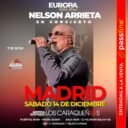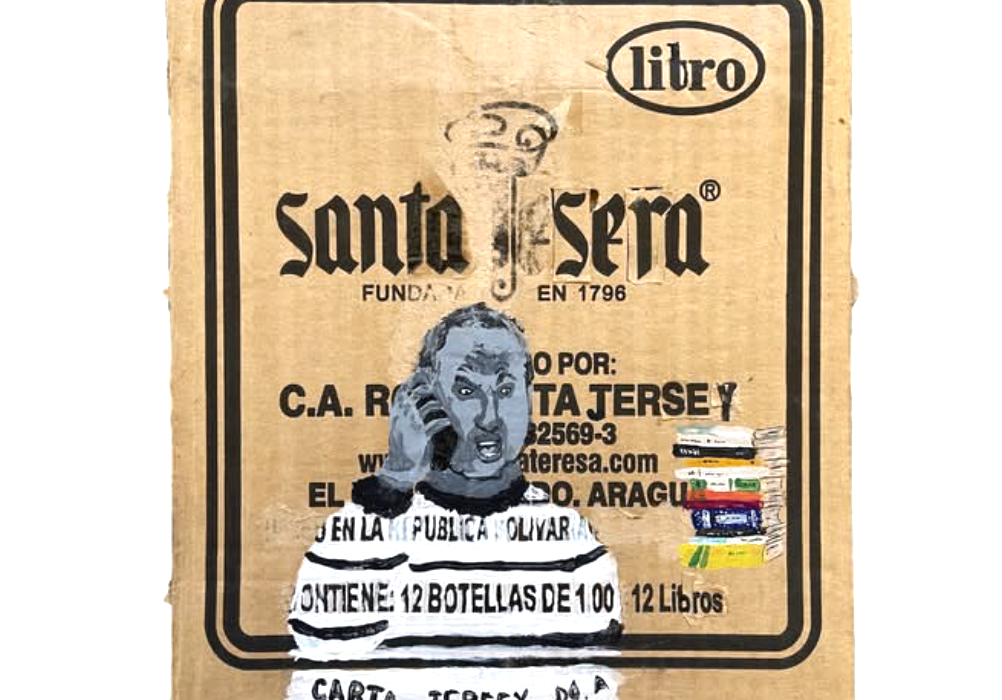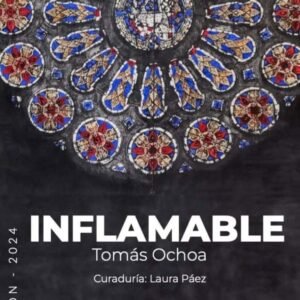El cine no siempre necesita una cámara. A veces, una imagen congelada en el tiempo tiene la potencia de una secuencia en movimiento. Luis Theis, artista venezolano, transforma cajas de cartón reciclado en relatos visuales que juegan con el humor, el caos y la memoria fragmentada. Su obra no busca contar una historia cerrada, sino abrir una ventana a la imaginación del espectador. ‘Storyboard’, su más reciente exposición en Caracas, es una película sin rodaje, donde cada cuadro es un instante detenido a la espera de quien le dé vida.
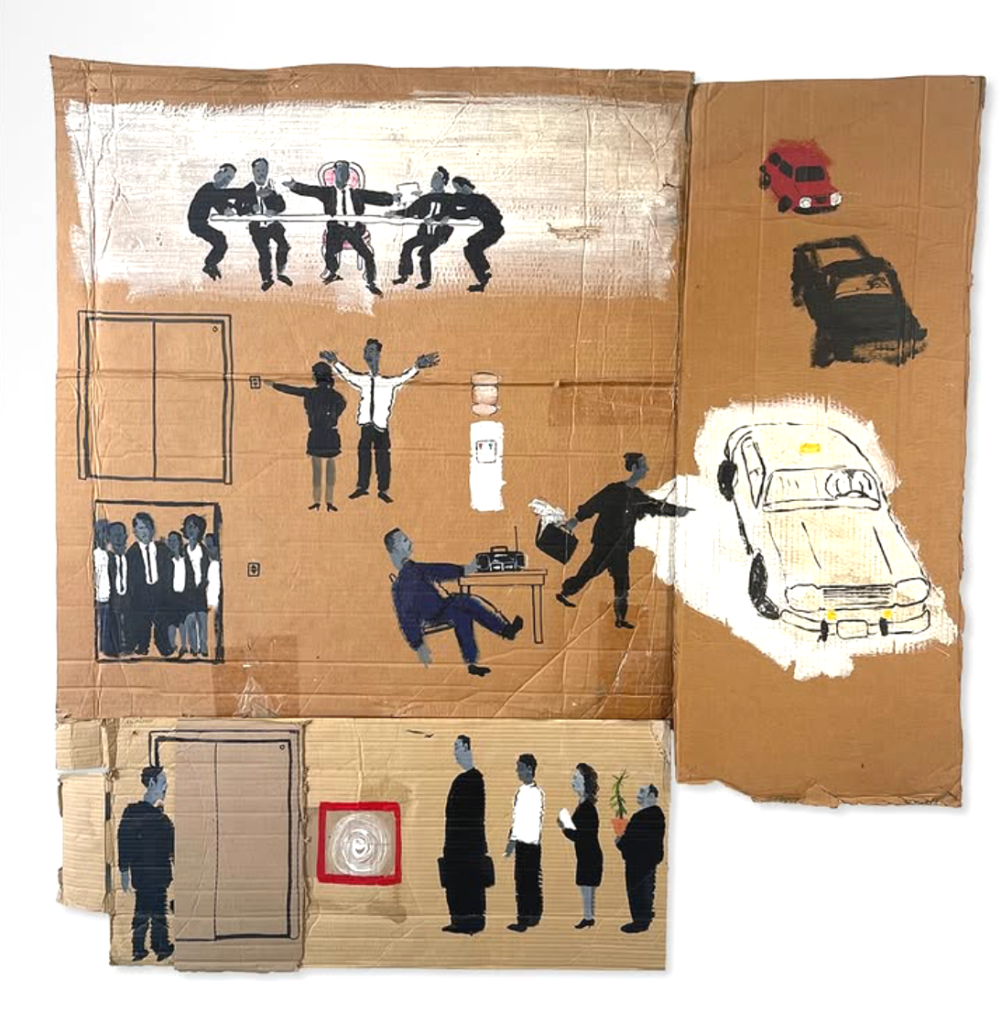
Luis Theis joven artista venezolano egresado de la escuela Superior de Artes Plásticas Armando Reverón, siempre soñó con llegar a ser cineasta, pero nunca lo fue, su obra sin embargo es puro cine. No el cine ordenado, de estructura lineal y narrativa complaciente, sino el otro, el del montaje fragmentado, la secuencia rota y la historia que se arma en la mente del espectador. «Storyboard», su más reciente exposición, que se está presentando actualmente en Cabinet Gallery en Caracas, es un relato visual pintado sobre cajas de cartón reciclado, donde el caos, la ironía y la transformación juegan un papel protagónico.
Theis pinta sobre superficies cuya existencia les viene dada por su propósito anterior: el de transportar mercancía de toda índole hasta su destino. Como si fueran carretes de una película usada, las superficies de Theis llevan consigo rastros de una historia marcada por lo comercial, los códigos de barra y finalmente las inscripciones que aluden a su origen. Estos elementos a primera vista parecieran estar intactos dentro de su obra, sin embargo, son intervenidos y transformados en algo nuevo. Como si fuese un director de cine que reescribe un guion sobre una vieja historia, Theis trastoca el significado de estos signos visuales para sumergir al espectador en un universo de imágenes híbridas, donde lo cotidiano se convierte en una metáfora.
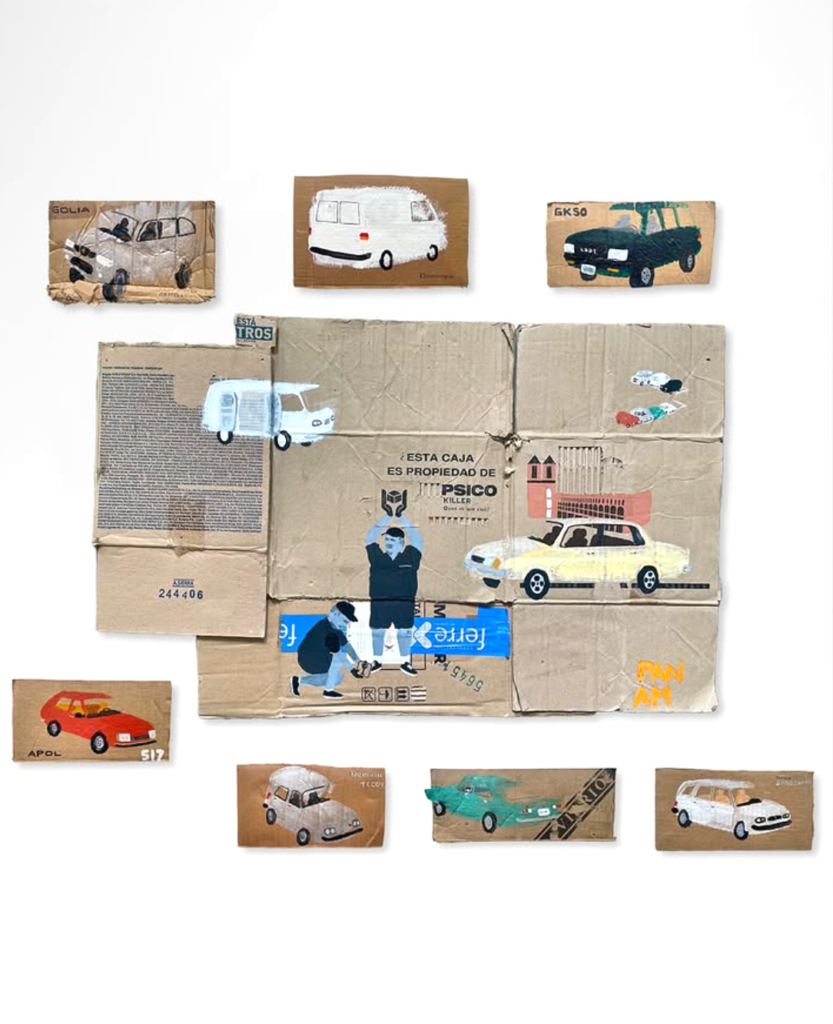
El desorden y la escritura son elementos recurrentes en la obra de Theis, un artista que de antemano ha aceptado la naturaleza efímera de su soporte, de su capacidad para transformarse con el tiempo, igual que las personas, las historias y las ciudades. La tipografía impresa en aquellas cajas, las instrucciones de uso, las advertencias y los códigos se convierten en parte de una nueva narrativa visual, una suerte de palimpsesto donde su pasado comercial convive con la explosión creativa del artista.
La pintura de Theis es figurativa e ilustrativa, con una energía que recuerda al grafiti urbano. No es casual su confesa admiración por Basquiat, cuya obra lo marcó. Hay algo del espíritu del arte callejero en su trazo y en su lenguaje: un dibujo que se impone con líneas precisas pero impulsivas, mientras que su escaso uso de colores vibrantes y el protagonismo del blanco y el negro, parecieran construir escenas extraídas de un cómic o de una animación en plena ebullición.
Su fascinación por lo audiovisual está presente en la manera en la que construye sus imágenes: a veces en una sola escena; otras, en una secuencia que el espectador debe completar mentalmente, como si cada cuadro fuese un fotograma de una película inconclusa.

El humor es otra herramienta fundamental en su trabajo. No se trata de una risa fácil, sino de una ironía cargada de capas, en las que el artista juega con las palabras y las imágenes, subvirtiendo el sentido de los signos gráficos que pueblan nuestro día a día, forzándonos a mirar lo cotidiano desde otra perspectiva.
El automóvil es otra constante en su obra. Un símbolo de modernidad y progreso, pero también de decadencia. En el universo de Theis, los coches aparecen como reliquias del deseo, objetos que en su esplendor prometían velocidad y futuro, pero que inevitablemente terminan corroídos por el tiempo, convertidos en chatarra. Un paralelismo con sus propias cajas de cartón: objetos diseñados para un uso inmediato que, al final de su ciclo, encontraron en su arte un nuevo propósito.

Si «Storyboard» fuese una película, sería una de esas donde la historia no se cuenta de manera convencional. Como en un film de Tarantino, la narrativa salta de un punto a otro, obligando al espectador a llenar los vacíos, a unir las piezas dispersas. Cada pintura es una escena detenida en el tiempo, esperando que alguien le dé movimiento en su imaginación.
Theis no hizo cine, pero lo entendió de otra manera. Su obra es montaje, edición, fragmento, plano y contraplano. Es una película sin rodaje, construida sobre lo que otros desecharon, pero que, como el cine mismo, se resistirá al olvido.
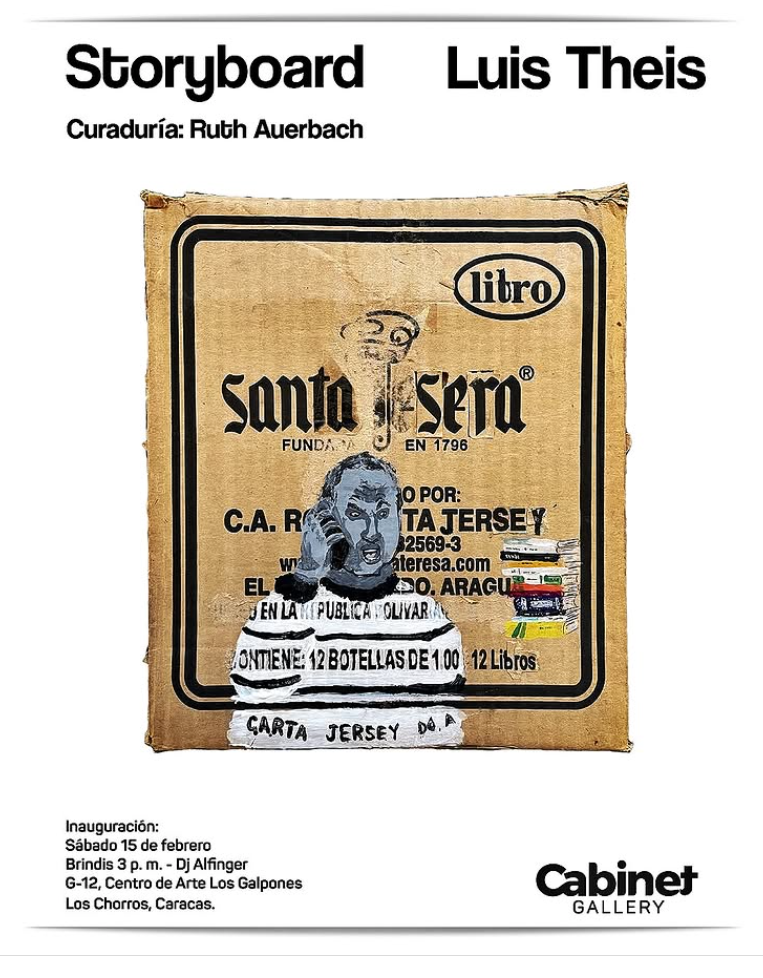
Storyboard: Fragments of a Visual Narrative
Cinema doesn’t always need a camera. Sometimes, a frozen image in time has the power of a moving sequence. Luis Theis, a Venezuelan artist, transforms recycled cardboard boxes into visual narratives that play with humor, chaos, and fragmented memory. His work does not aim to tell a closed story but to open a window to the spectator’s imagination. ‘Storyboard,’ his latest exhibition in Caracas, is a film without shooting, where each frame is a moment paused, waiting for someone to bring it to life
Luis Theis, a young Venezuelan artist and graduate of the Armando Reverón Higher School of Visual Arts, who always dreamed of becoming a filmmaker, but never did. However, his work is pure cinema. Not the orderly one with a linear structure and pleasing narrative, but the other kind—that of the fragmented editing, broken sequences, and stories pieced together in the viewer’s mind. ‘Storyboard,’ his latest exhibition currently showing at Cabinet Gallery in Caracas, is a visual narrative painted on recycled cardboard boxes, where chaos, irony, and transformation play a leading role.
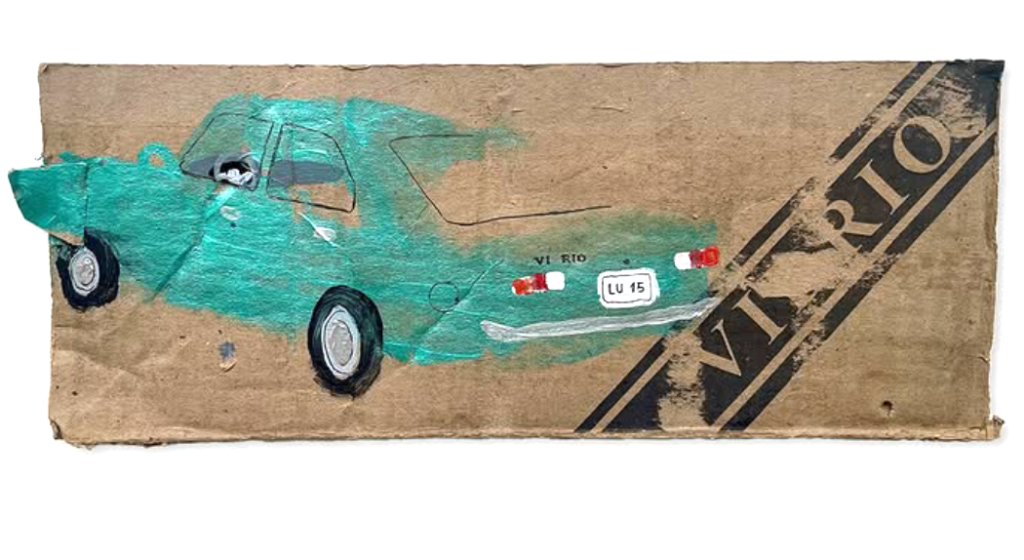
Theis paints on surfaces whose existence is given by their previous purpose: to transport goods of all kinds to their destination. As if they were reels of used film, Theis’s surfaces carry traces of a history marked by commerce, barcodes, and ultimately inscriptions referring to their origin and destination. At first glance, these elements seem intact within his work; however, they are intervened and transformed into something new. Like a film director rewriting a script from an old story, Theis distorts the meaning of these visual signs to immerse the viewer in a universe of hybrid images, where the everyday becomes a metaphor.
Disorder and writing are recurring elements in Theis’s work, an artist who readily accepts the ephemeral nature of his medium, and its ability to transform over time, just like characters, stories, and cities. The typography printed on those boxes, usage instructions, warnings, and codes become part of a new visual narrative, a kind of palimpsest where its commercial past coexists with the artist’s creative explosion.
Theis’s paintings are figurative and illustrative, with an energy reminiscent of urban graffiti. His confessed admiration for Basquiat, whose work influenced him, is no coincidence. There is something of the spirit of street art in his strokes and language: a drawing that imposes itself with precise but impulsive lines, while his limited use of vibrant colors and the dominance of black and white seem to construct scenes pulled from a comic or an animation in full swing.
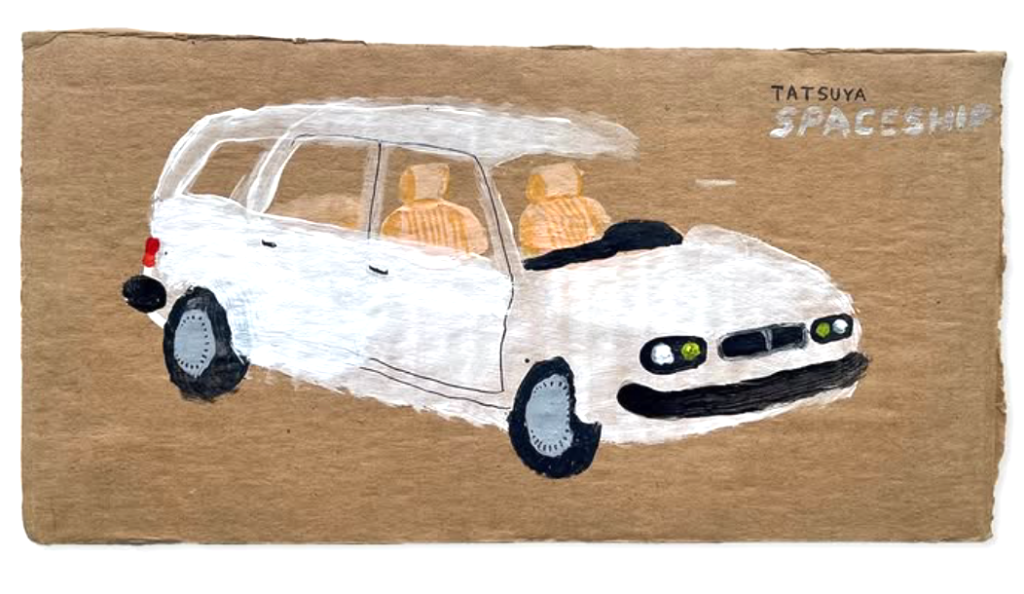
His fascination with the audiovisual world is present in the way he constructs his images: sometimes in a single scene, while others, in a sequence that the viewer must mentally complete, as if each frame were a still from an unfinished film.
Humor is a fundamental tool in his work. It’s not easy laughter, but an irony layered with depth, as seen in many of his pieces, where the artist plays with words and images, subverting the meaning of the graphic signs that populate our daily lives, forcing us to view the ordinary from another perspective.
The automobile is another constant in his work. A symbol of modernity and progress, but also of decay. In Theis’s universe, cars appear as relics of desire, objects that promised speed and future in their splendor but inevitably end up corroded by time, reduced to scrap. This parallels his own cardboard boxes: objects designed for immediate use that, at the end of their cycle, found a new purpose in his art.
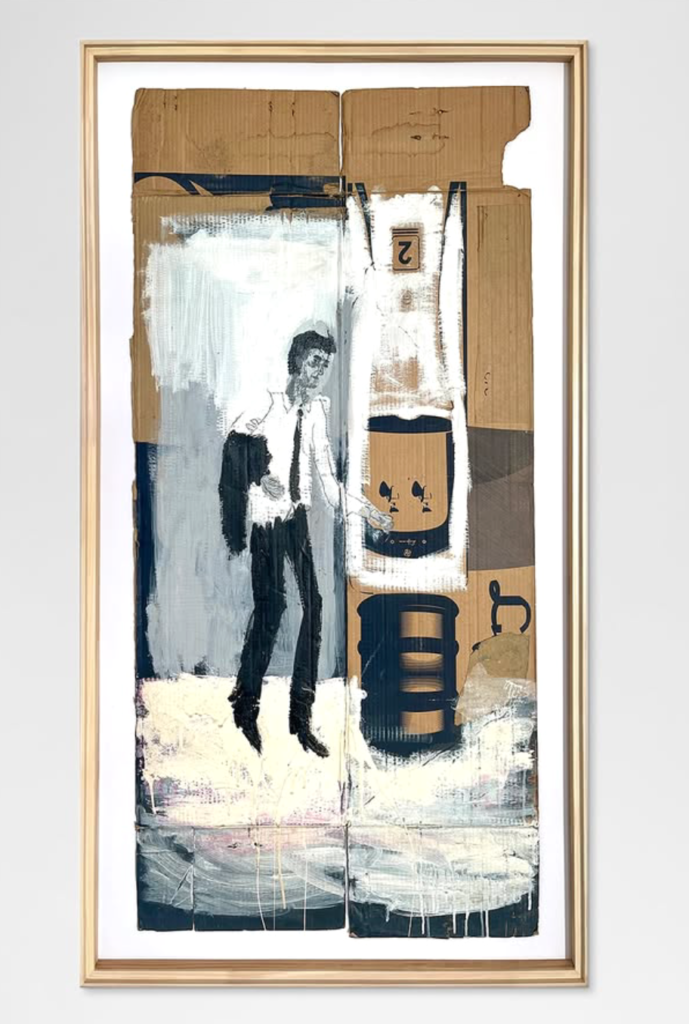
If ‘Storyboard’ were a film, it would be one of those where the story is not told conventionally. Like a Tarantino film, the narrative jumps from one point to another, forcing the viewer to fill in the gaps, to connect the scattered pieces. Each painting is a scene frozen in time, waiting for someone to bring it to life in their imagination.
Theis didn’t make films, but he understood them differently. His work is montage, editing, fragment, shot, and reverse shot. It is a film without shooting, built on what others discarded, but, like cinema itself, it will resist oblivion.
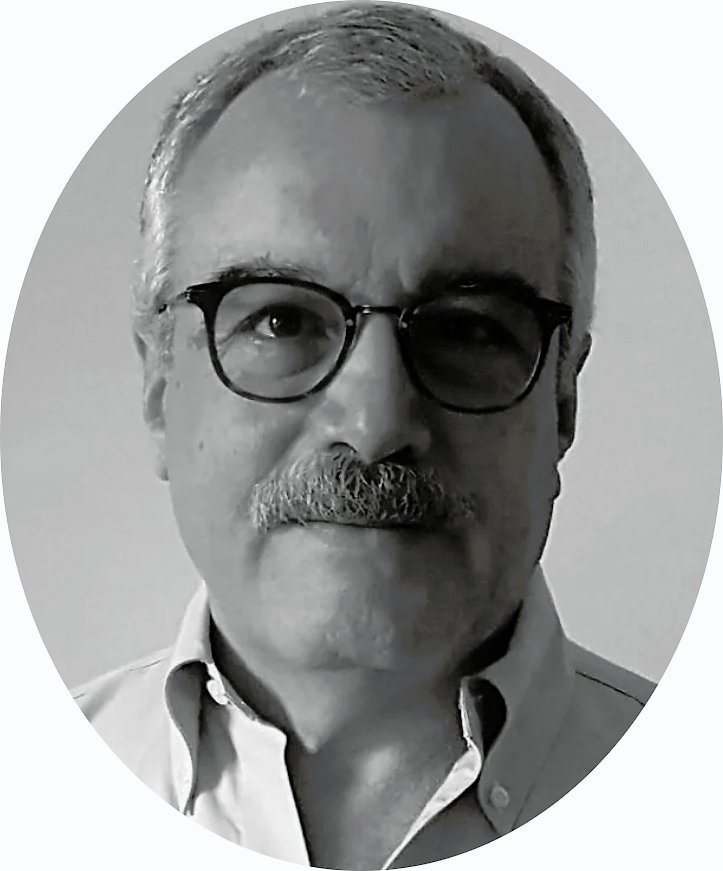
Cesar Sasson
Ciudad de Panamá, Panamá
Febrero de 2025


